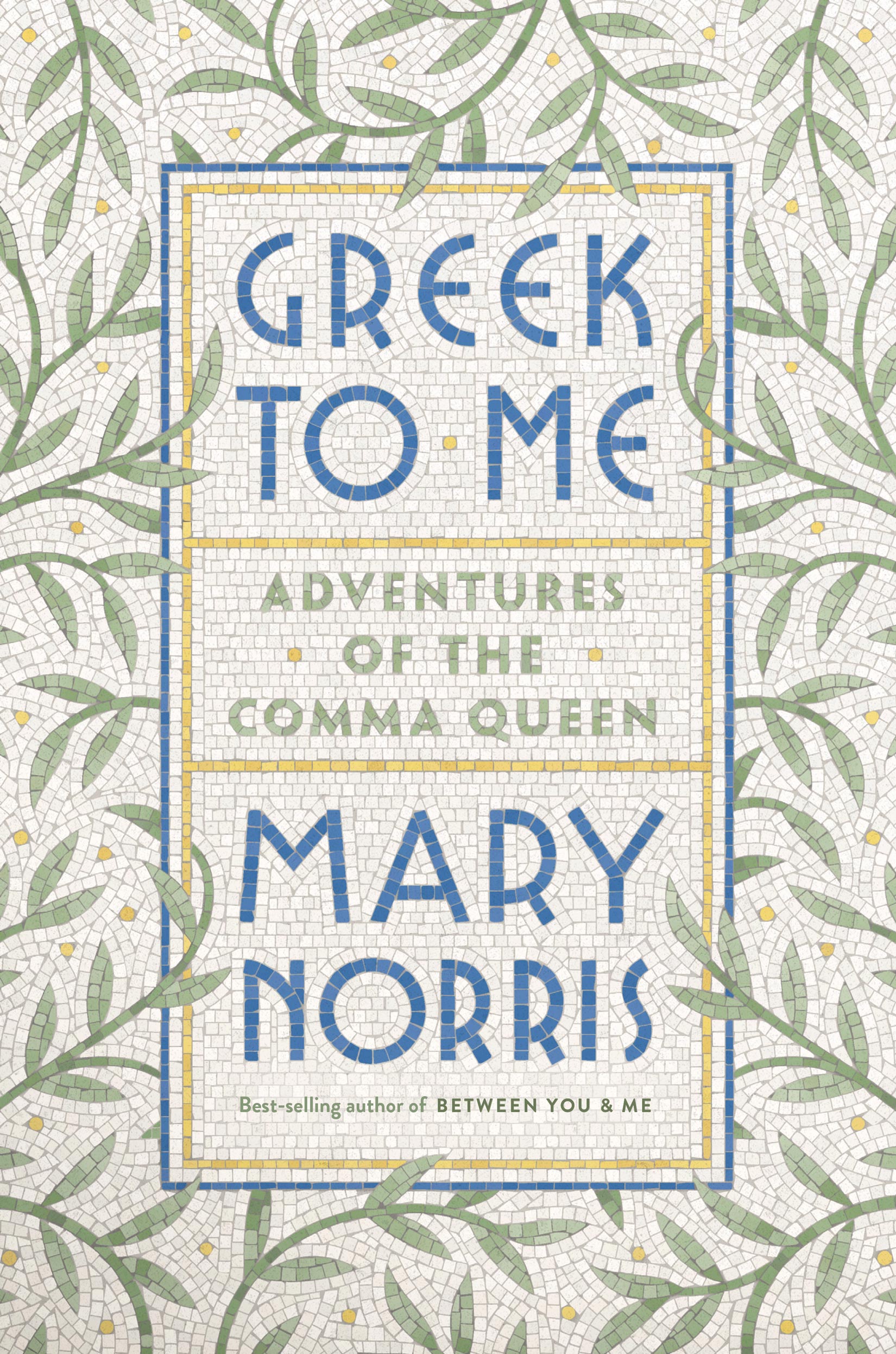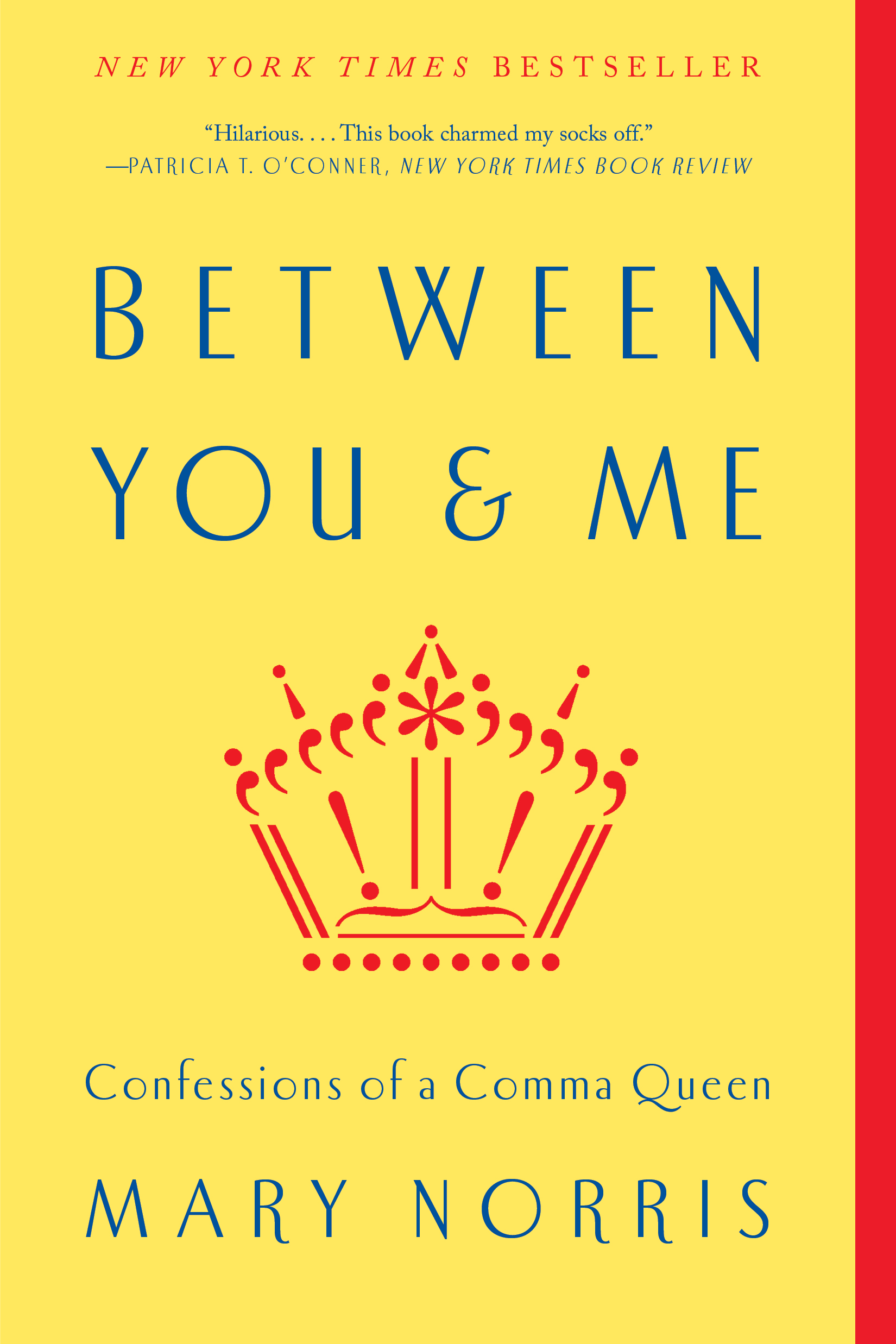Pittsburgh, July 16, 2019
I used to be a snob about Pittsburgh, a rival to Cleveland as a Rust Belt city. When I finally got there, to a convention of copy editors in 2015, I saw the error of my ways. In geography class, we learned that Pittsburgh is where the Allegheny and the Monongahela meet to form the Ohio. I hadn’t realized that the convergence of the two rivers was not just a rhythmical recitation but a geological phenomenon of great majesty. Pittsburgh is hillier than flat old Cleveland, so where the rivers cut through it there are cliffs, and now that the steel industry has mostly left, and the rivers have been cleaned up, those cliffs are covered with plants and trees. Pittsburgh is a very green city, and the Ohio River is broad—I crossed a bridge over it in a car to the airport yesterday, and the driver reminded me that the Ohio went all the way to the Mississippi, connecting Pittsburgh to the Gulf of Mexico.
My host in Pittsburgh was City of Asylum Books, which is in a building called Alphabet City, on the Northside. They put me up in a hotel called the Priory, a former Benedictine monastery. It had everything a chain hotel has—business center, ice machine, bar—but all in quaint, churchy surroundings. The staff at the reception desk ranged from a very welcoming little person—I wasn’t sure, when he held the door for me the night I arrived, whether he was a guest or an employee until I saw him behind the desk the next morning—to a rude woman who did not raise her eyes from her computer screen while answering my questions. My room had a view of parking lots and curved ramps where two highways meet (I-279 and I-579). At one point, I thought I heard a train whistle, and I did! Turning to the window, I watched as a freight train rumbled between the parking lot and the highways. The industrial view made me feel at home. One of the windows was sealed with a layer of Plexiglas, but when I tried the other one it opened! Do you know how rare it is for a hotel to have windows that open?
The people at City of Asylum had arranged for me to have a tour of Sampsonia Way. This is a narrow street—an alley, really—its surface much patched, in an area where all the streets have names associated with the Mexican War. City of Asylum owns a few houses on this street, where they put up writers who have been exiled from their countries. One, called House Poem, is covered with Chinese characters. It was painted by Huang Xiang, a poet in exile from China. Another has a huge saxophone painted on it—Jazz Poetry is a thing in Pittsburgh—and another ties the skyline of Pittsburgh into a scene from Burma and is covered in Burmese writing. Winged House has sculptures of feathered wood attached to the facade. Down the street is the Mattress Factory, a museum of contemporary art, with a tangle of poles sticking out the top. A fence is almost completely covered by an orange-flowering trumpet vine.
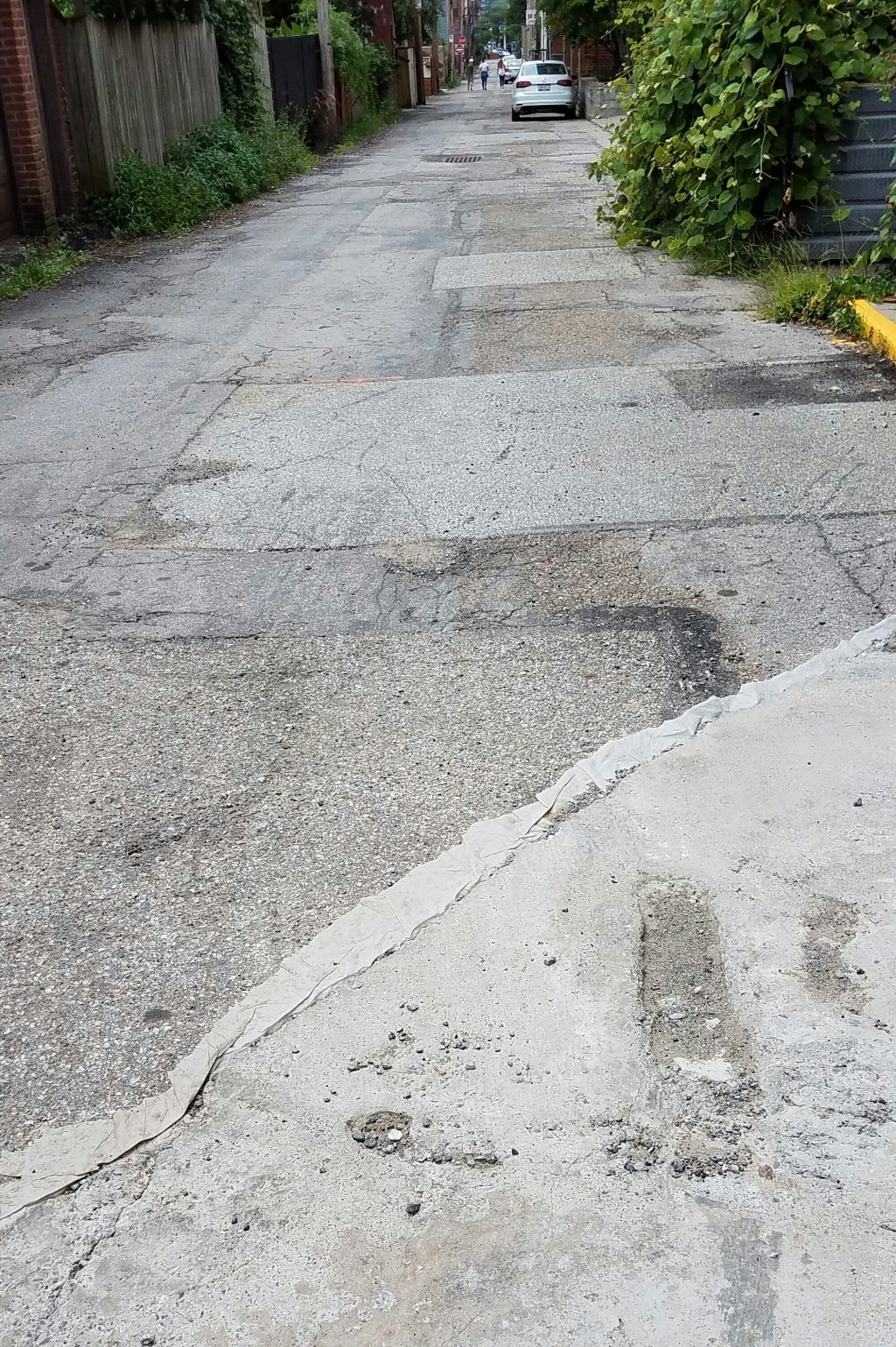
Sampsonia Way: The pavement.
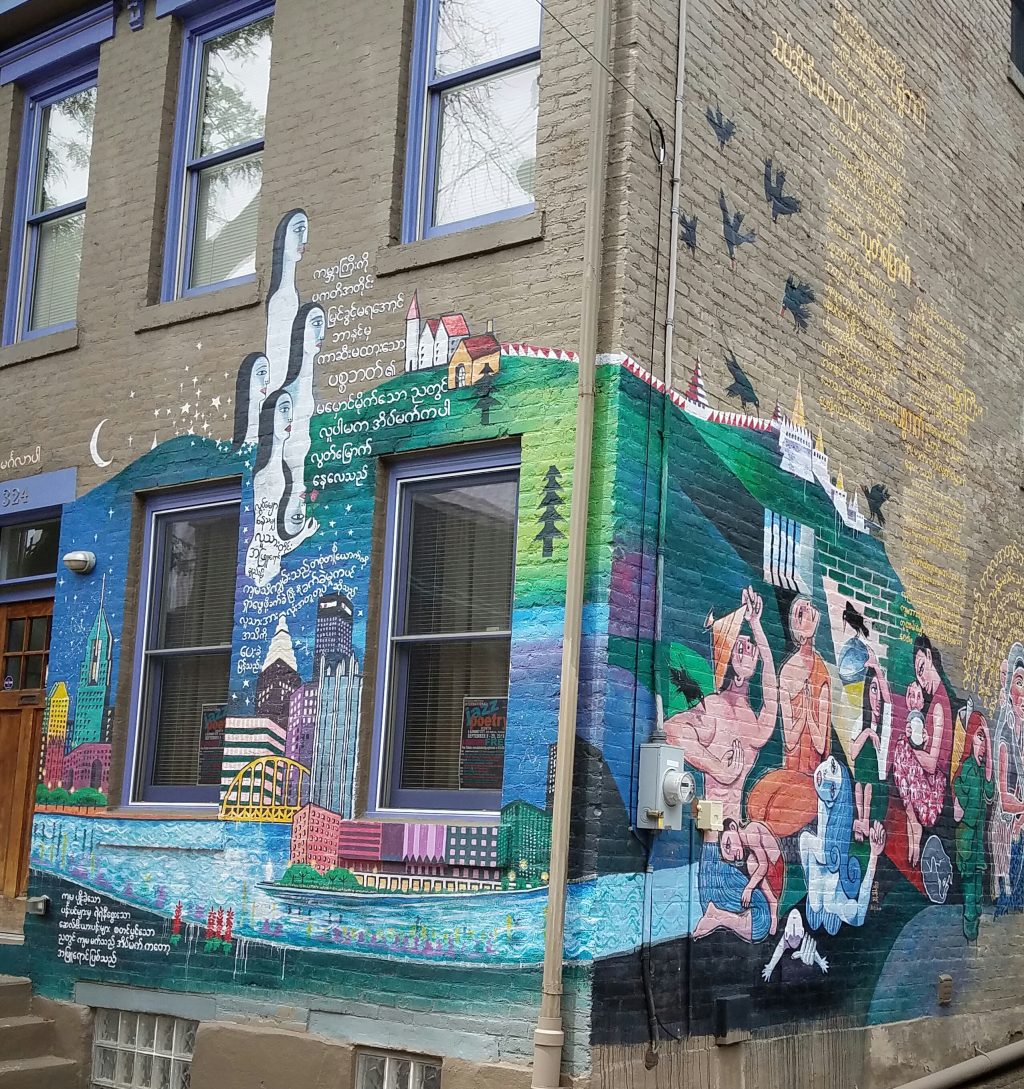
Burma House
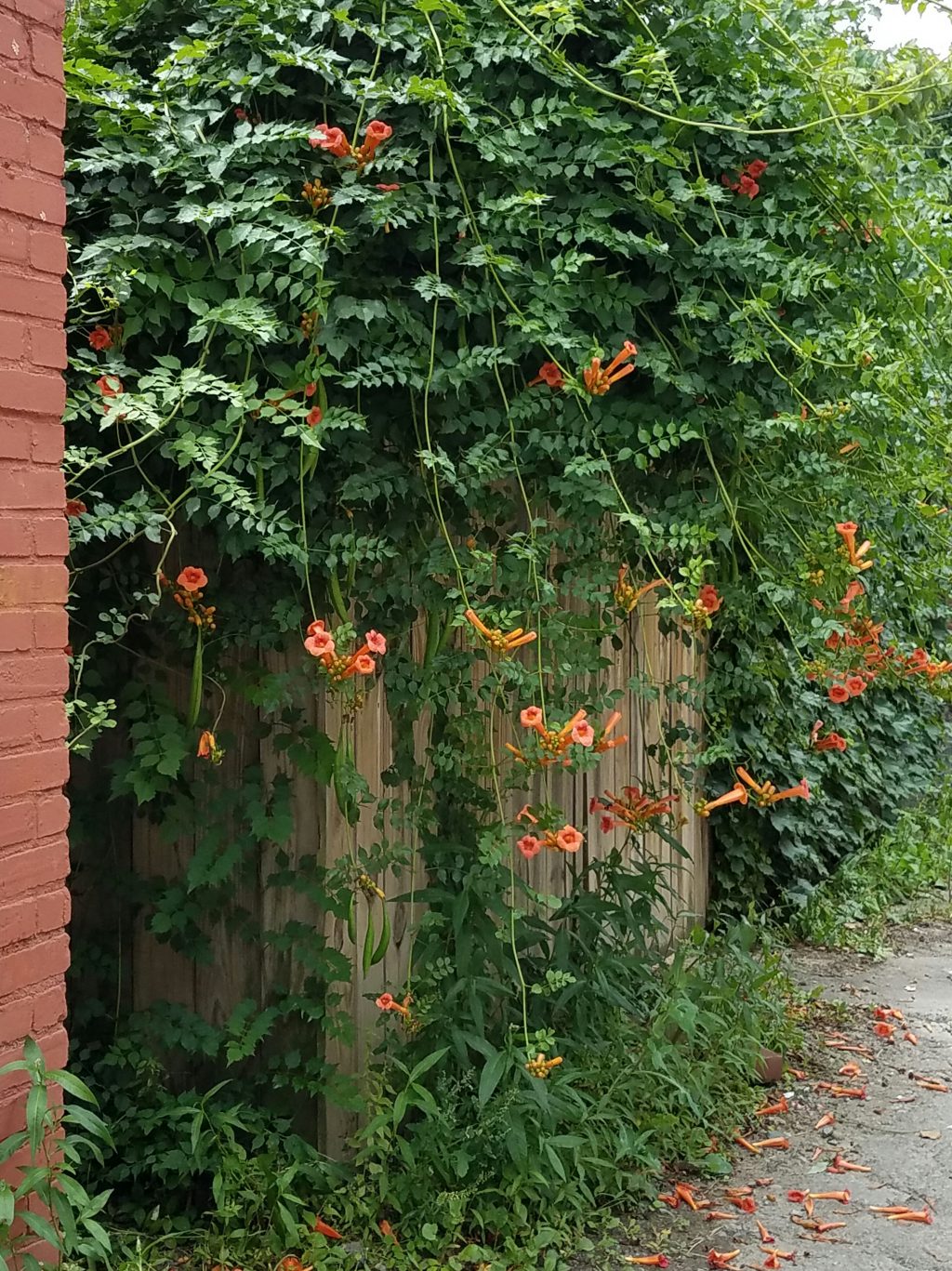
Trumpet vine
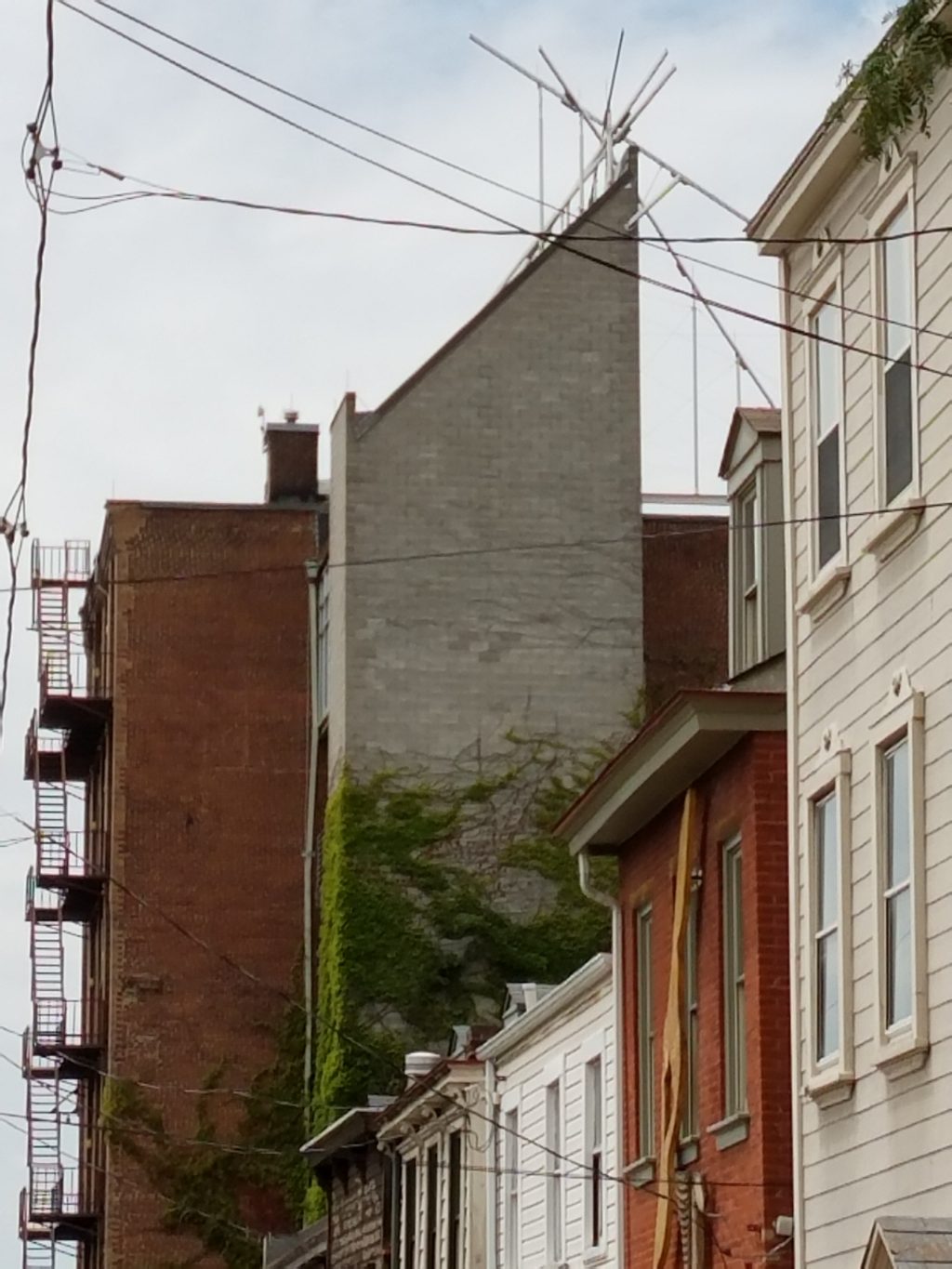
The Mattress Factory
A tall, thin woman in a narrow apron came running up the street. She had straight brown chin-length hair and a big smile. This was Diane Samuels, an artist whom friends had told me about when they heard I was going to Pittsburgh. She and her husband, Henry Reese, are the founders of City of Asylum. The couple are very modest, and it took a while to figure that they are philanthropists of a very hands-on variety. They seek out writers who have been exiled for political reasons and give them and their families a residence and all the support they need—jobs, schools, medical care—to relocate in Pittsburgh. As houses on Sampsonia Way became available, Diane and Henry bought them. They also bought the building, formerly a Masonic lodge, that houses the bookstore.
Diane’s studio is on Sampsonia Way. My guide was bent on finishing the tour and getting back to work, but Diane invited us in, and I didn’t want to leave. There is a scroll, about six feet wide and the length of a sperm whale, made of old paintings that Diane had ripped up and on which she had written the full text of “Moby-Dick.” She recycles a lot of her art this way, and it is very rich in color. Her current project is a scroll, like a cross section of a tree trunk, containing the entire text of Richard Powers’ “Overstory.” I met Henry later, at the bookstore. His bow tie, which looked as if it had been shredded, had also been made by Diane.
The reading was well attended. My friends Kevin Stemmler and his husband, Larry, retired English professors whom I met a few years ago at the Sigma Tau Delta conference in Cincinnati, came with Kevin’s former student Therese. Kathleen White drove up from Ohio with her friend Erin. The ex-sister-in-law of my neighbor Susan in Manhattan introduced herself. Carol Pickerine, whom I met at the most recent ACES conference, in Providence, came. I had been told that the audience would be less interested in a reading from GREEK TO ME than in a tell-all about the writing process. It was gratifying to realize that my process resembled Diane’s: some chapters are made of passages ripped out of old travel pieces and attempts at fiction, woven together with new words to make a whole.
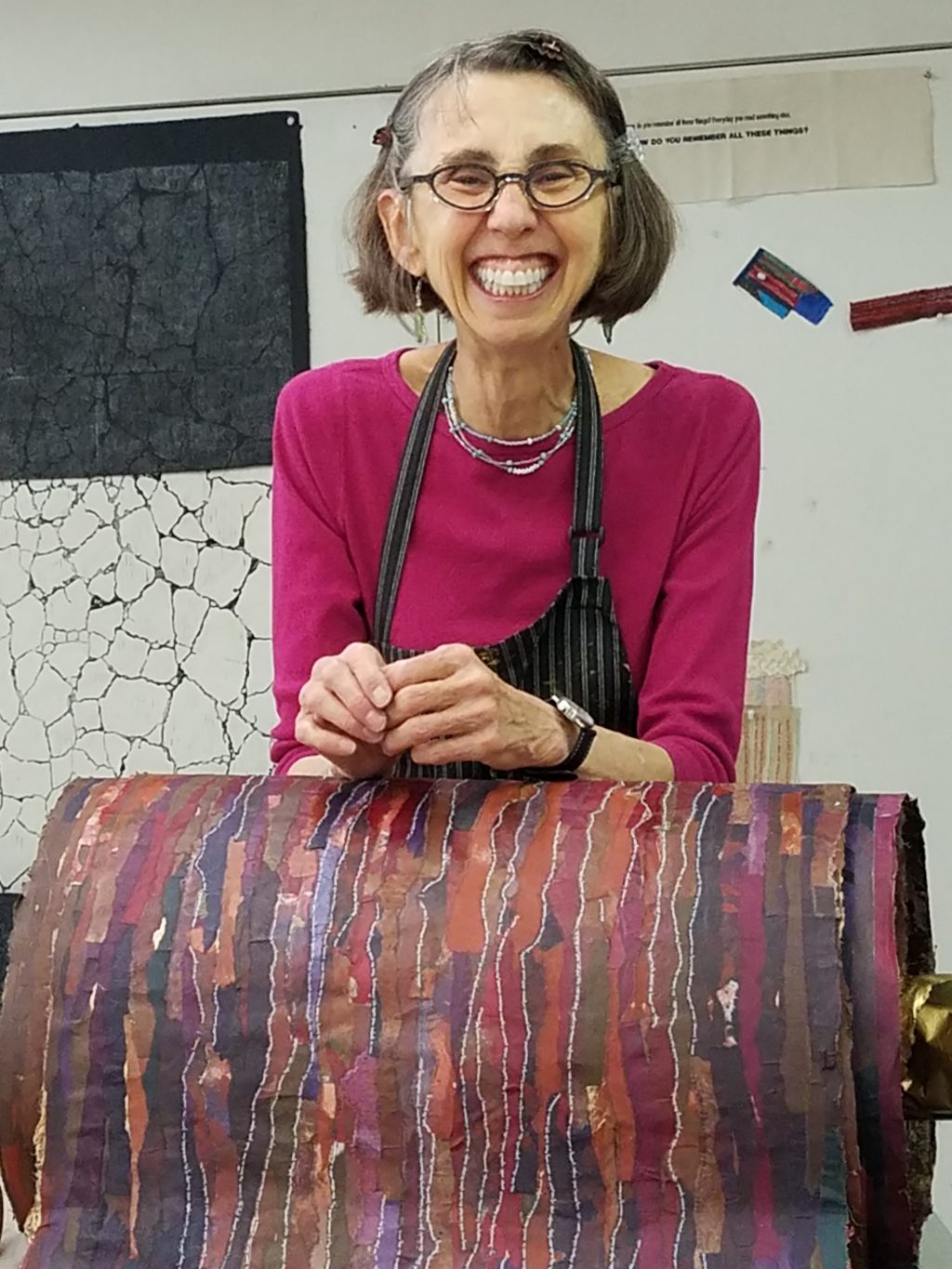
Diane Samuels with OVERSTORY, a work-in-progress based on the book by Richard Powers
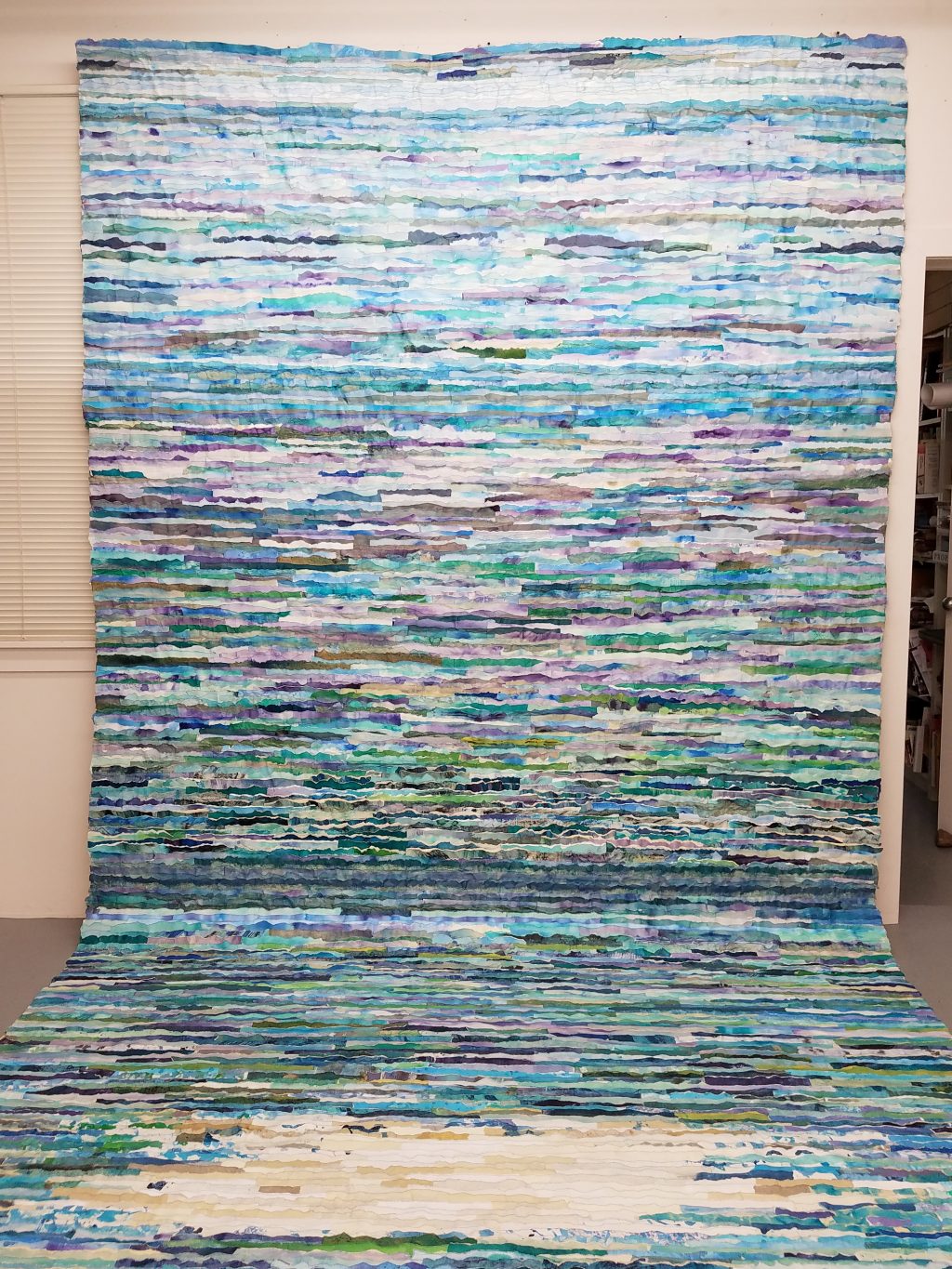
Diane Samuels’ MOBY-DICK
